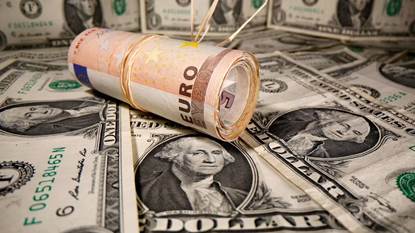FOREX RESERVES

Disclaimer: Copyright infringement not intended.
Context
- India's foreign exchange reserves rose to $531.08 billion in the week through Oct. 28, marking their biggest weekly gain since September 2021.
What are Foreign Exchange Reserves?
- Foreign-exchange reserves (also called forex reserves or FX reserves) are money or other assets held by a central bank or other monetary authority.
- The assets are held so that it can pay its liabilities (if needed), such as the currency issued by the central bank, and various bank reserves deposited with the central bank by the government and other financial institutions.
- Reserves are held in one or more reserve currencies, mostly the United States dollarand to a lesser extent the EU's euro, the British pound sterling, and the Japanese yen.
- Foreign exchange reserves should ideally include foreign banknotes, foreign bank deposits, foreign treasury bills, and short and long-term foreign government securities.
- However, they also include gold reserves, special drawing rights (SDRs), and International Monetary Fund (IMF) reserve positions.
- This broader figure, along with SDRs, gold reserves, and IMF reserve positions is more readily used.
Thus, in a nutshell, Foreign Exchange Reserves include-
- Reserves held in US Dollars, The Euro, The British Pound, or the Japanese Yen
- Foreign bank notes, foreign bank deposits, foreign treasury bills, and short-term and long-term foreign government securities
- Gold reserves
- Special Drawing Rights and International Monetary Fund reserve positions
- Foreign-exchange reserves are called reserve assets in the balance of payments and are located in the capital account. Hence, form an important part of the international investment position of a country.
Importance of Forex reserves
- Forex reserves give comfort to the government and the RBI in managing India’s external and internal financial issues at a time of major contraction in economic growth.
- It serves as a cushion in the event of a crisis on the economic front and is enough to cover the import bill of the country for a year.
- Forex Reserves help the rupee to strengthen against the dollar. The foreign exchange reserves to GDP ratio is around 15 percent.
- Reserves provide a level of confidence to markets that a country can meet its external obligations, demonstrate the backing of domestic currency by external assets, assist the government in meeting its foreign exchange needs and external debt obligations and maintain a reserve for national disasters or emergencies.
What does the RBI do with the forex reserves at its disposal?
- The Reserve Bank functions as the custodian and manager of forex reserves and operates within the overall policy framework agreed upon with the government.
- The RBI allocates the dollars for specific purposes. For example, under the Liberalised Remittances Scheme, individuals are allowed to remit up to $250,000 every year.
- The RBI uses its forex kitty for the orderly movement of the rupee.
- It sells the dollar when the rupee weakens and buys the dollar when the rupee strengthens.
- When the RBI mops up dollars, it releases an equal amount in rupees. This excess liquidity is sterilized through the issue of bonds and securities and LAF operations.
Final Thought
- The forex reserves were, after all, accumulated as a buffer against currency volatility, external shocks, and sudden stops in capital flows. And they are being rightly used for that purpose.
IMPORTANT LINKS
https://www.iasgyan.in/blogs/bond-yield
https://www.iasgyan.in/daily-current-affairs/monetary-policy




1.png)
